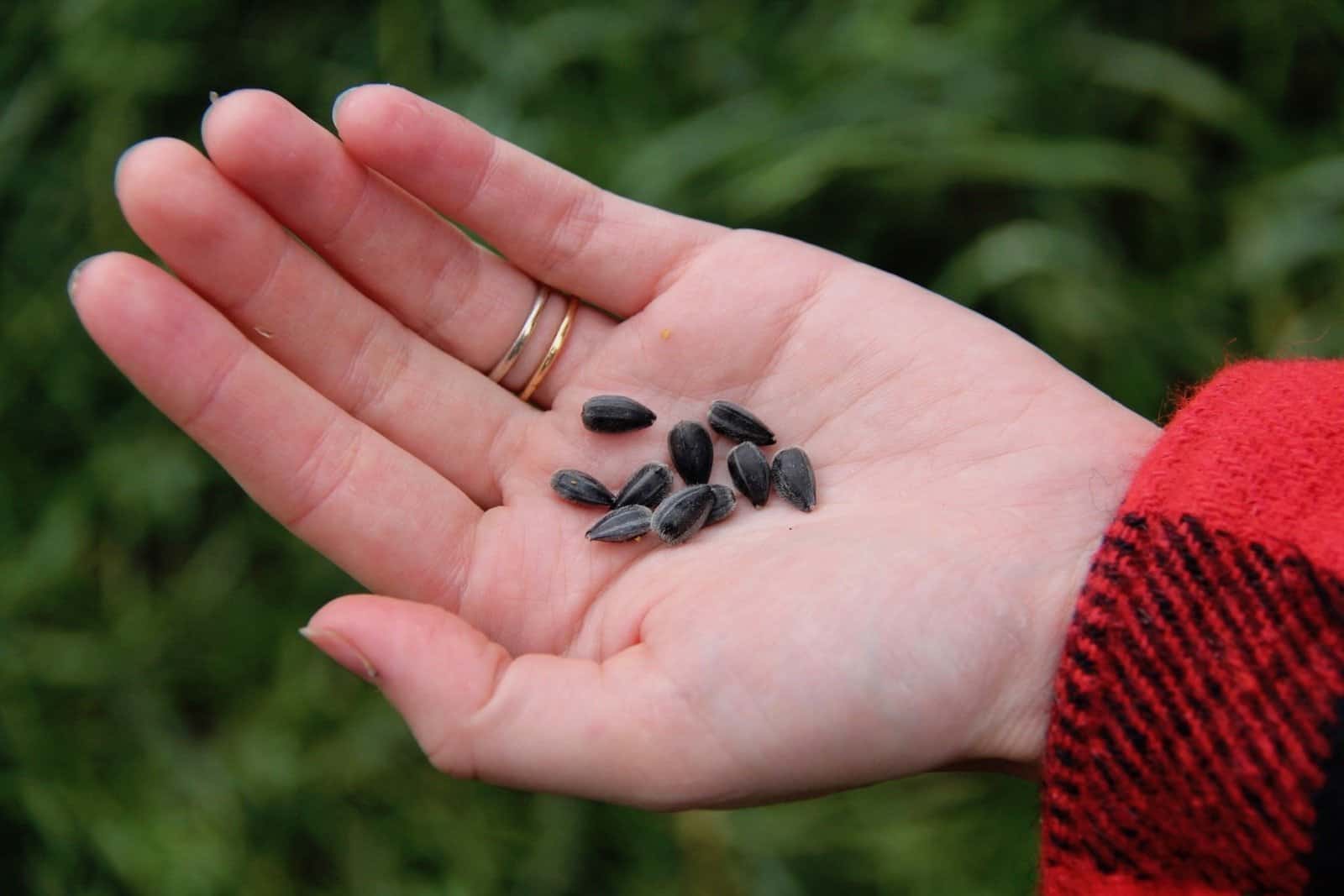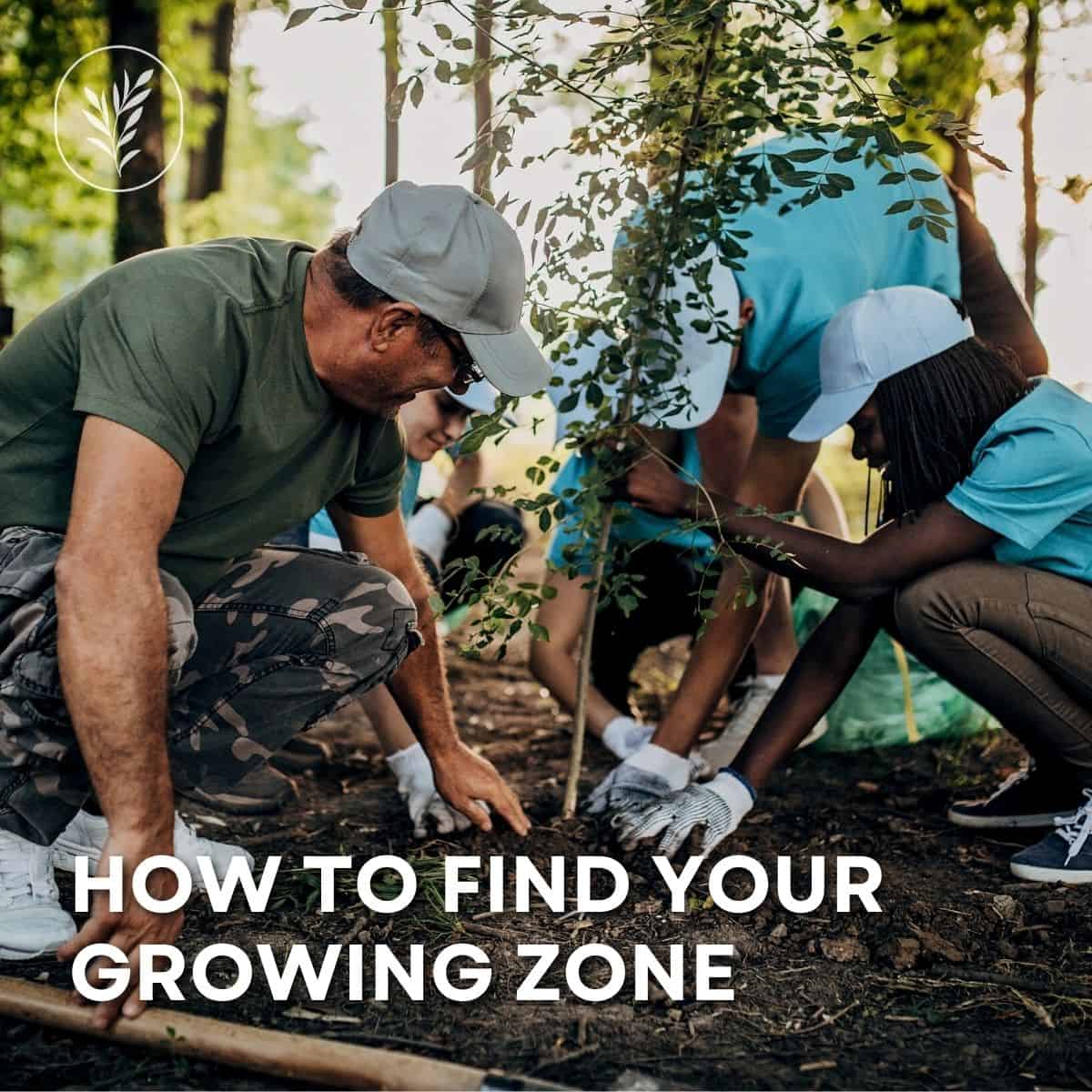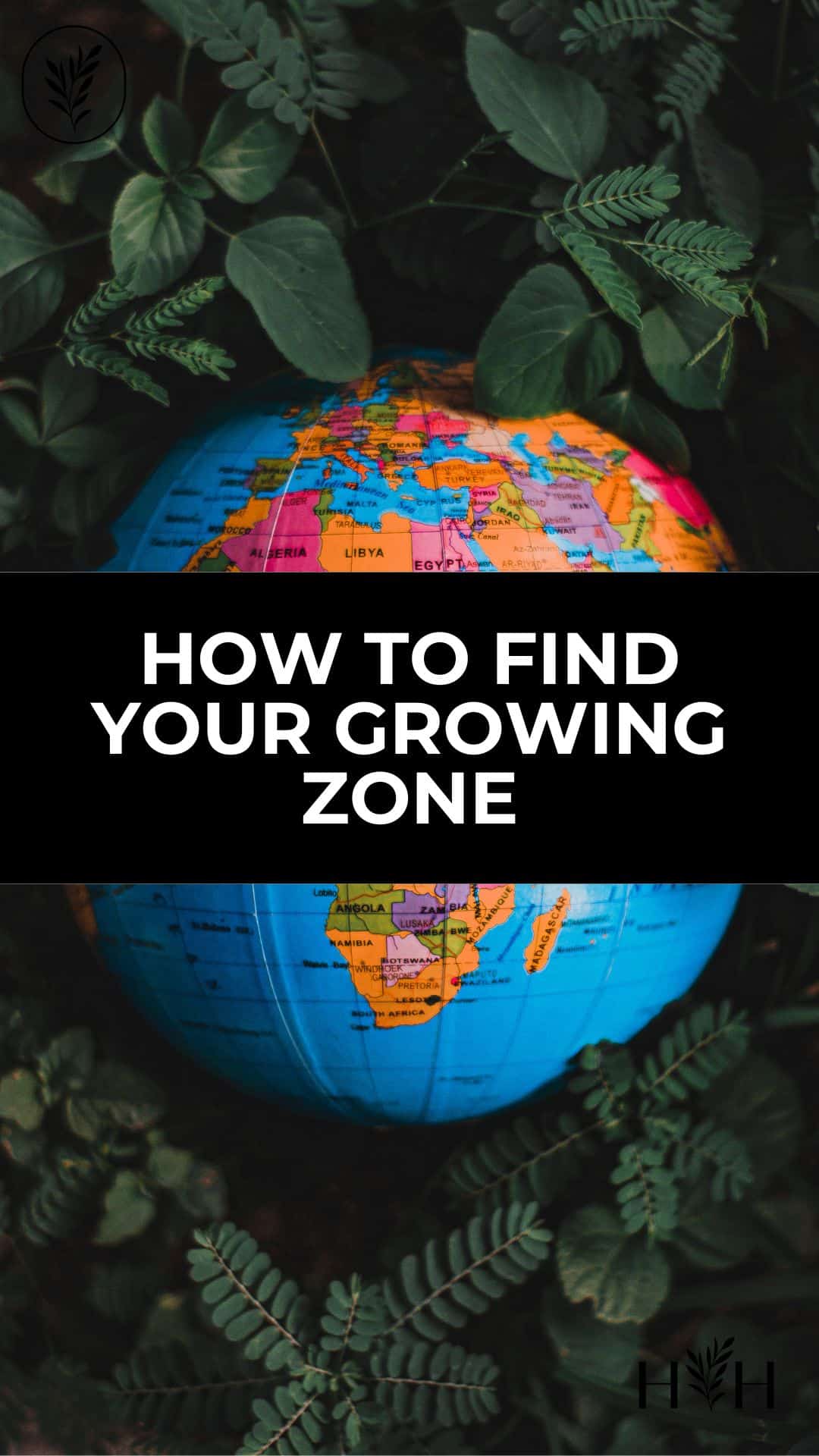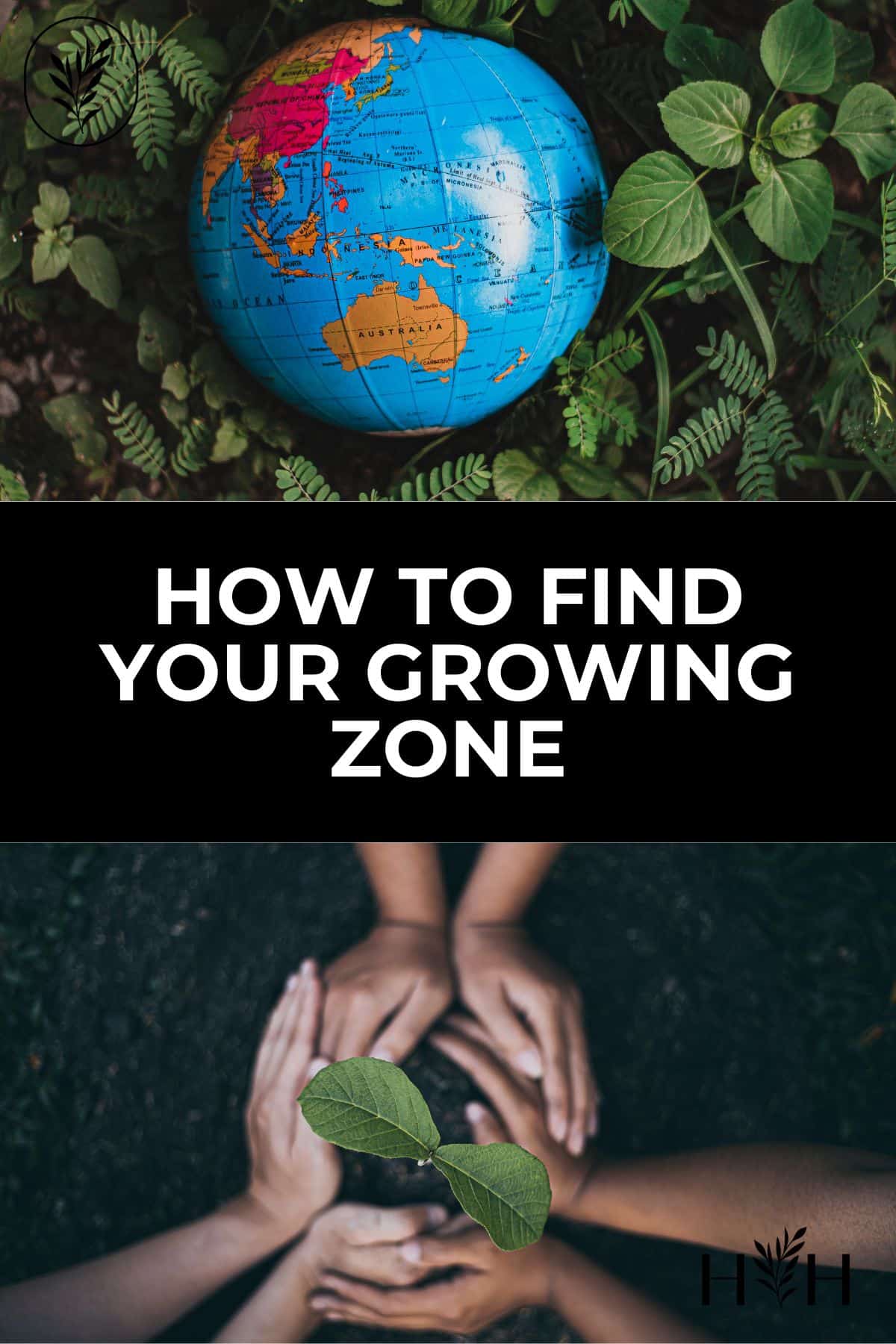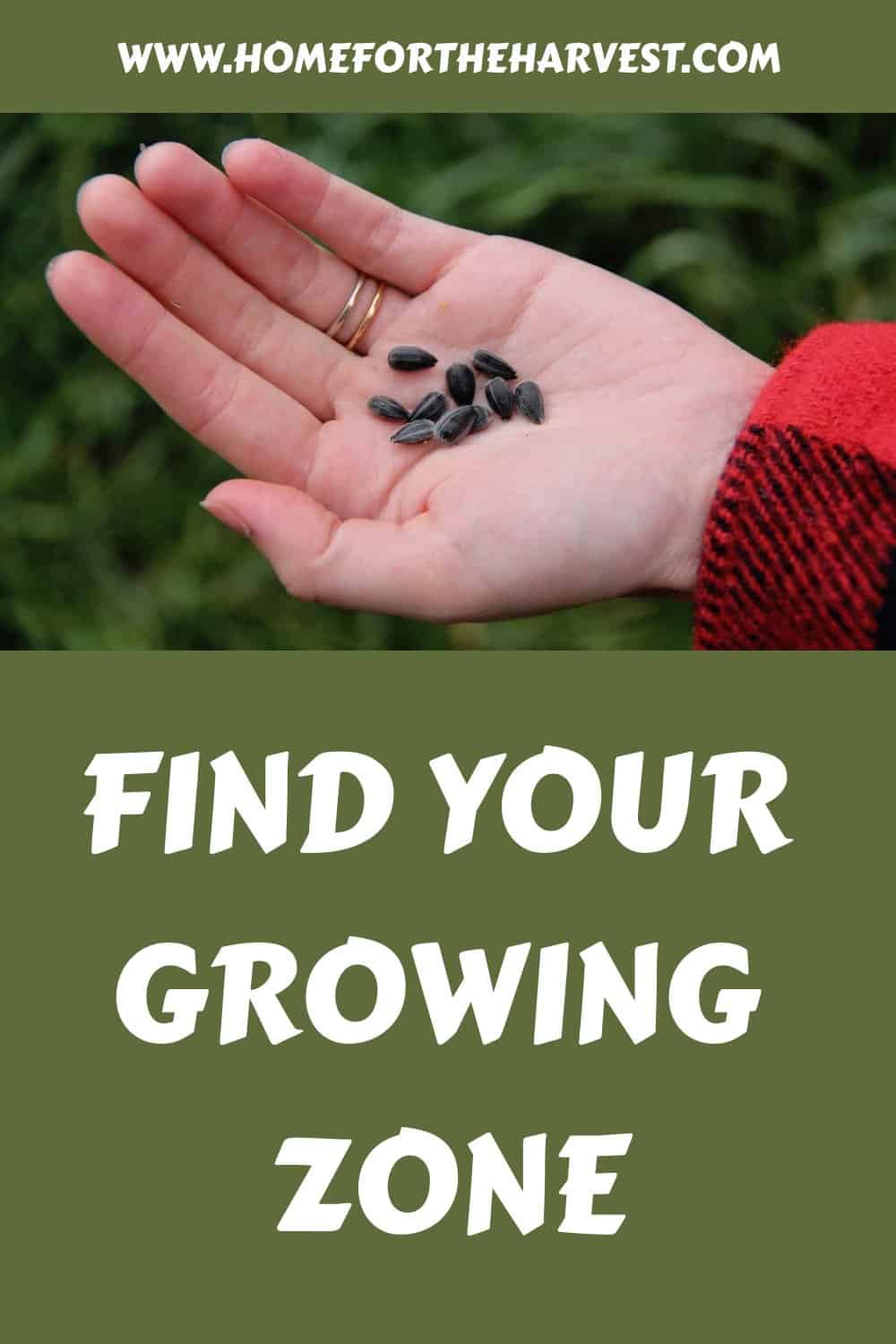Figuring out your local planting zone is one of the most important steps when you start gardening. Your local climate growing zone which can be found by entering your zip code into the USDA Plant Hardiness Zone Map gives you an easy-to-remember category for the plants that will thrive in your area. Once you’ve figured out how to find your growing zone for the first fime, you’ll be able to select your crops with confidence!
Why knowing your growing zones important
Have you ever gone out to your perennial gardens in the spring and discovered that some of your favorite plants haven’t made it through the winter? Or have you planted out some baby vegetable plants just to discover one morning that they’ve been killed by frost?
Plants vary widely in their tolerance of growing conditions. This is especially true for their temperature requirements. Due to this range in tolerances, knowing your local climate growing zone is a key factor in growing a successful garden.
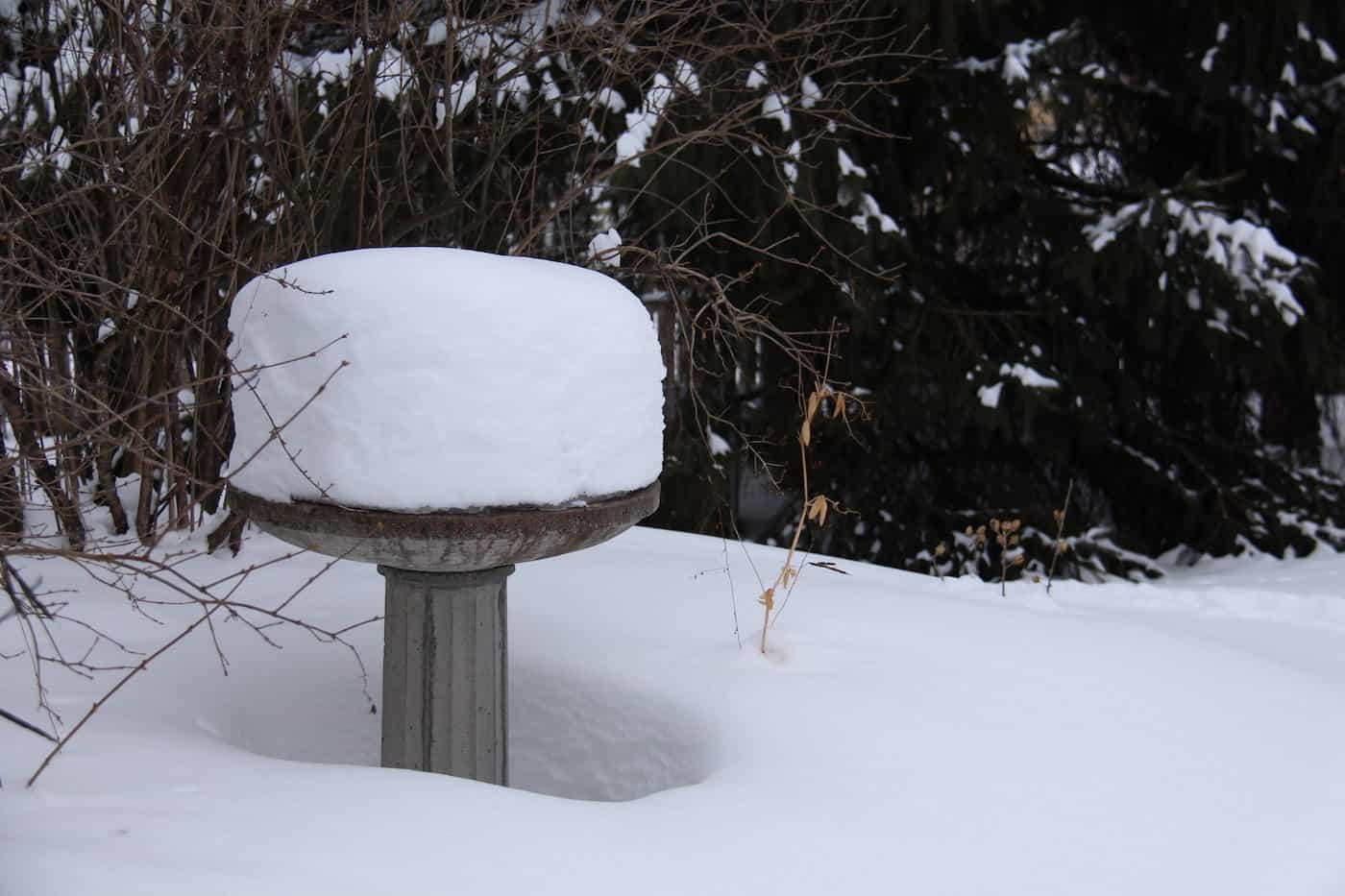
If you’re not aware of your local growing zone before you install your garden, any plants that aren’t matched to your unique climate may not survive. They simply aren’t adapted to the local environment. It can be so frustrating when you’ve spent time and money on a plant only to have it die from external environmental factors.
Perennials are plants that live for more than two years, often surviving through the winter months and returning each year in the spring. These hardy plants provide a range of benefits, such as lowering maintenance costs since they don’t need to be planted annually!
How to find your growing zone
Fortunately, in most areas of the world, federal scientists have categorized geographical areas by climate. The climate categories they’ve created will help you learn what plants do well in your area. Finding your category, known as your Plant Hardiness Zone, is a crucial early step in garden planning (even before selecting your crops). Learning how to find your growing zone will help you get in the mindset for gardening in your local climate.
Although there are many different systems around the world, the most popular classification system is the USDA’s system of Plant Hardiness Zones. The categories in the system provide a numerical rating for the climate in a given area, based on the coldest winter temperatures in the area. The coldest zones on the scale are given the lowest numbers, with the zone numbers becoming higher as winter minimum temperatures increase. Zones can each also be divided into two sub zones, a & b.
When describing the lowest temperatures at which a plant will survive, gardeners will state the plant is hardy to a given zone. For example, if a given plant will survive in temperatures down to −28.9 °C (−20 °F), it would be “hardy to Zone 5a”.
How to find your growing zones using plant hardiness maps
The easiest way to estimate your growing zone is by referencing a Plant Hardiness Map. These maps will give you a general idea of your plant hardiness zones:
USA: https://planthardiness.ars.usda.gov/
Canada: http://www.planthardiness.gc.ca/?m=1
Knowing your hardiness zone is an important factor when it comes to gardening, especially when growing flowers or vegetables. Each region has its own climate and temperature range, so the plants that thrive in that area must be taken into consideration. To find out which plants will work best in your region, you need to check the map for your area and zoom into your local area.
Make sure to note whether your garden lies within a defined plant hardiness zone or if it’s close to a border between two different zones. Though the map can give you a general idea of how to find your growing zone, it’s usually not detailed enough to account for microclimates and variations near plant hardiness zone boundaries. For this reason, it’s important to understand which plants are compatible with the specific hardiness zone in your area, as this will help ensure success when planting.
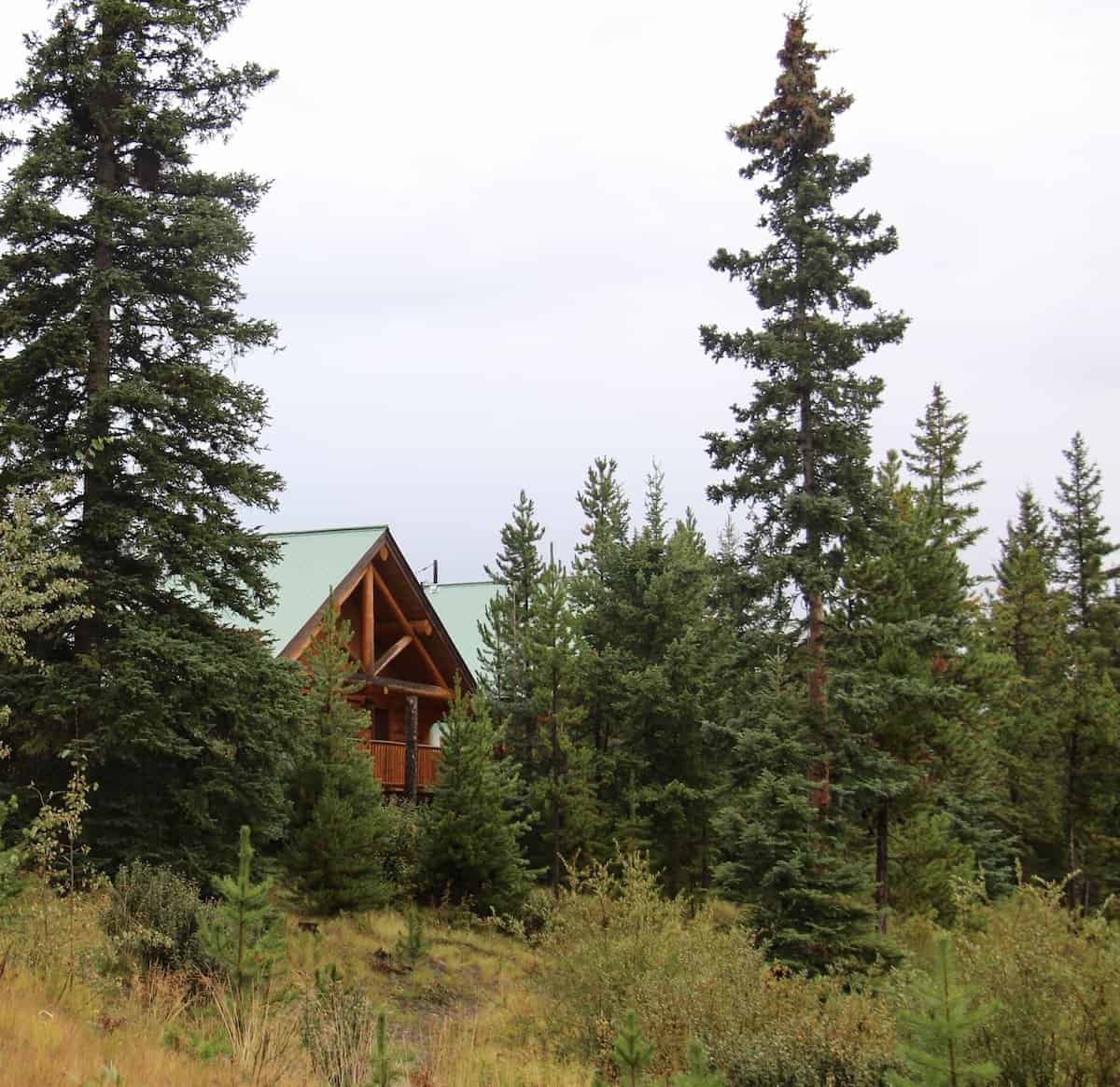
The limitations of a hardiness zone map
Because most plant hardiness maps cover large areas of land, they cannot provide great detail for the boundary areas between zones. The hardiness zone map may also fail to account for microclimates (small areas where external factors have affected the climate). For instance, you may live in a Zone 5b area but be able to grow a few select plants rated for Zone 6a if they’re grown in a warm, sheltered area.
A hardiness zone map also doesn’t take into account environmental factors that vary throughout time. For instance, a large amount of snow on the ground in the winter can actually insulate plants from harsh conditions, allowing the more tender plants to survive.
A particularly windy winter can also threaten plants that should traditionally thrive in a given zone. The wind-chill and desiccating/drying effect of the wind can lead to frozen, dried-out plants that may not survive through the winter.
Outdoor temperatures can also vary widely from year to year in one area. A particularly cold winter may lead to injury or demise of plants that are on the edge of survivability in a given zone. For all these reasons, plant hardiness maps should be seen as a general estimate rather than a certainty.
You’ll also want to learn your last spring frost date if you’re growing tender plants outdoors during the summer.
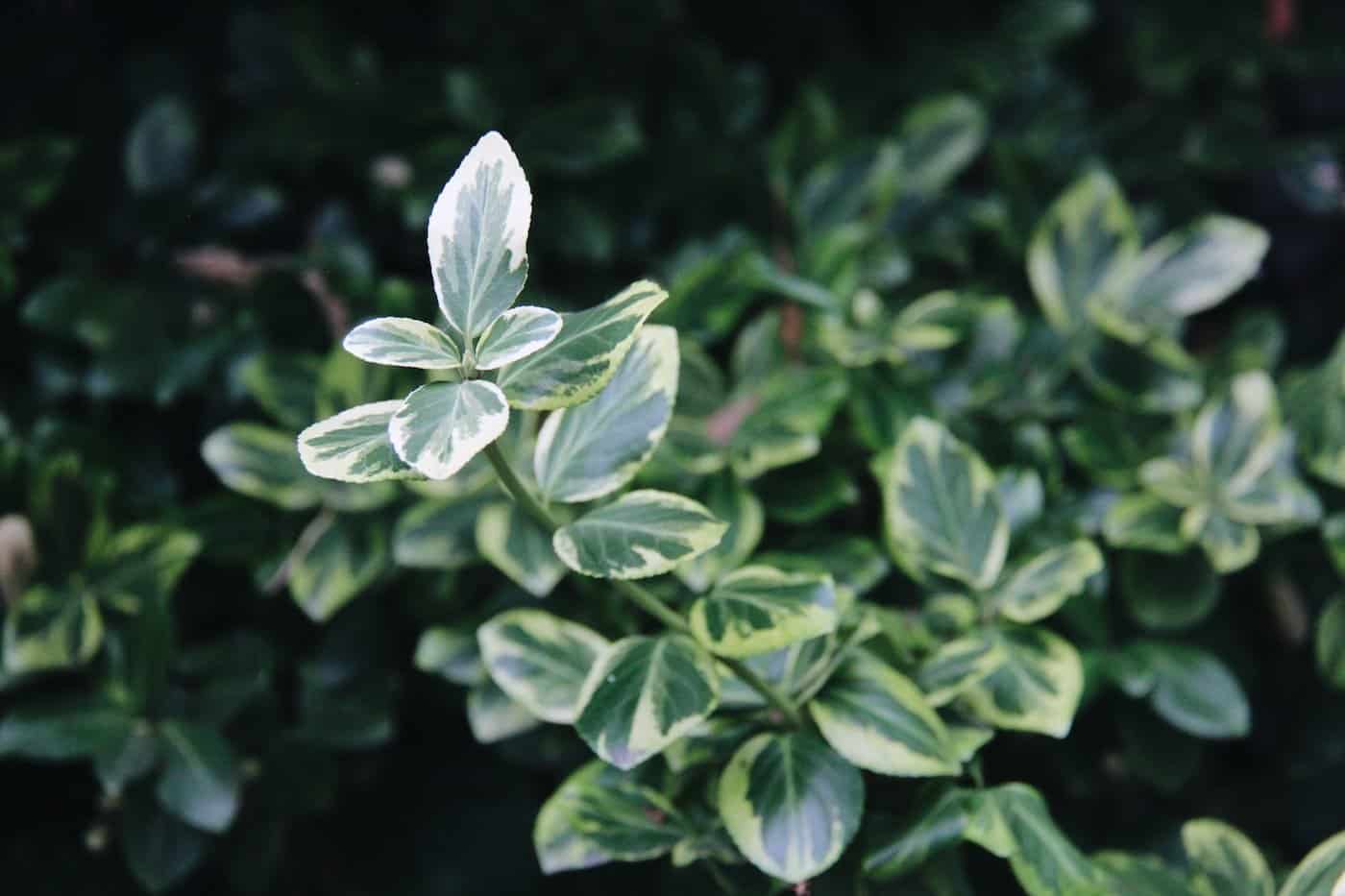
How to use climate data to determine your growing zone?
Hardness zones are generally based on the lowest temperature experienced in a given area. For instance, on the USDA Plant Hardiness scale, a plant that’s hardy to Zone 7a can survive in temperatures down to -17.8 °C (0 °F). Other scales do include additional variables beyond minimum temperature, but for practical reasons (plant import, global publications), the USDA classification system is often used.
When determining your zone, check the climate records for your local area. Climate data may be available from government websites or even Wikipedia. Compare the minimum temperature trends to the minimum temperatures in the zone table.
While you’re examining the climate data to determine your zone, also take note of the average frost dates. It is important to estimate the date of the last frost in the Spring and the date of the first frost in the Fall. These two dates will help you schedule your seed starting and harvest activities.
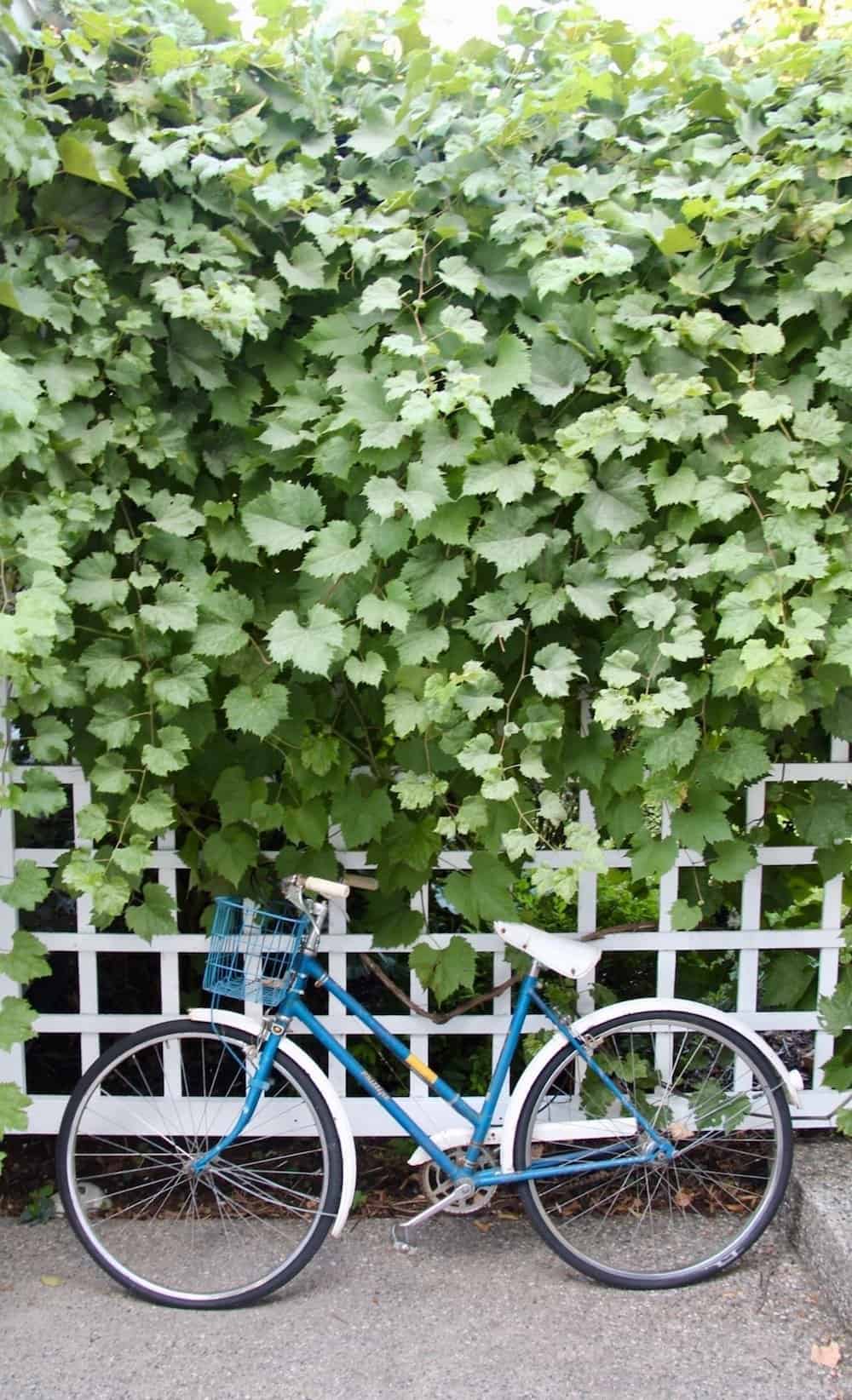
Pinpoint your zone by asking local experts
If your area’s growing zone map is unclear, and you haven’t been able to locate reliable climate data, the easiest way to figure out your zone is to ask a local gardening expert. If you don’t yet have a trusted gardening expert in your area, try these suggestions to find a gardening mentor.
When asking local experts, consider asking a few opinions and take the most common response. Some gardeners live in their own unique microclimates or may have different growing conditions than you (even locally). It may therefore be helpful to ask more than one person.
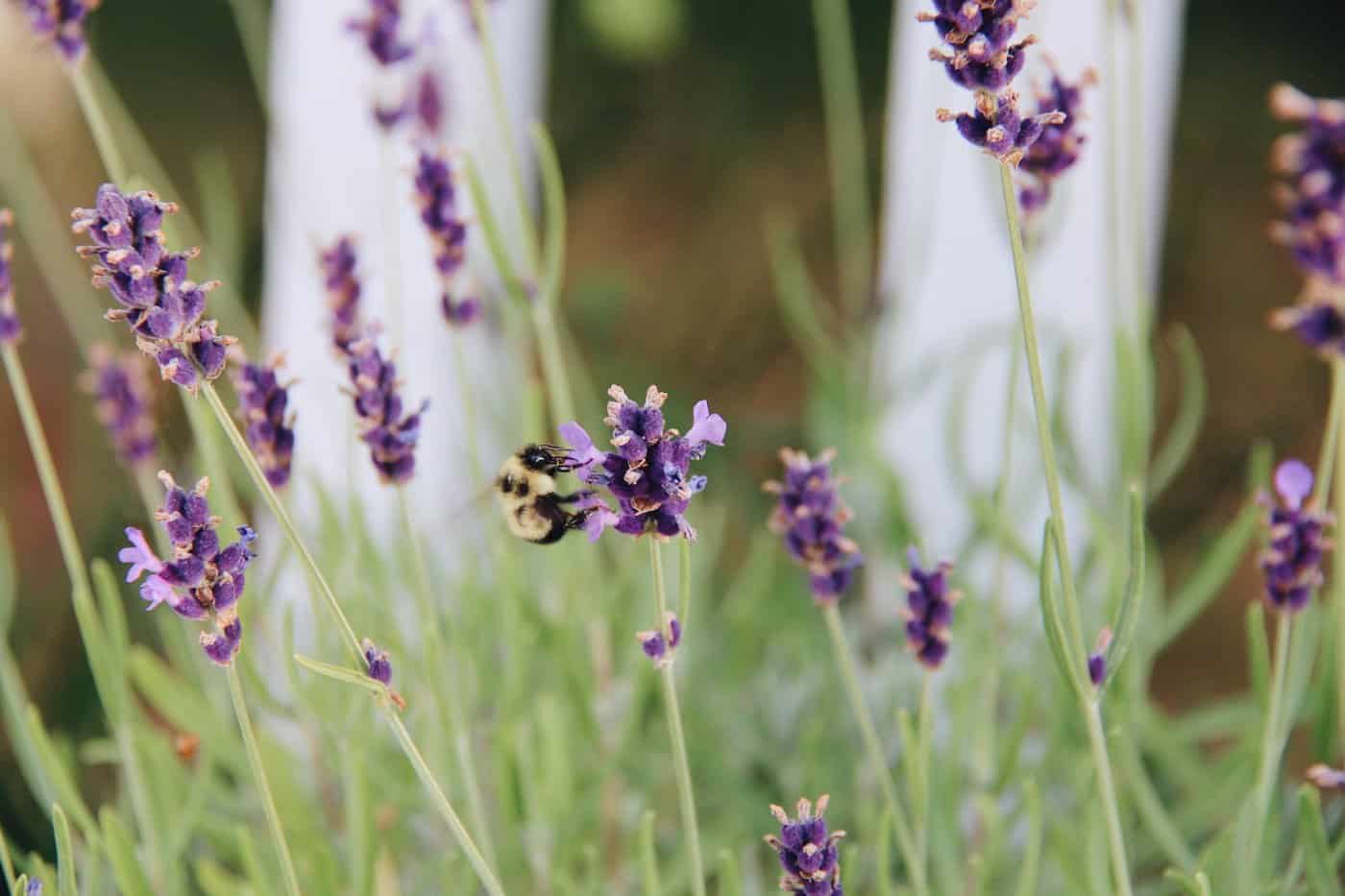
Planning your garden for your plant hardiness zone
Once you’ve determined your zone, write it down! You don’t want to forget or get confused after you’ve done all the research to decipher it. The Free Garden Planner is the perfect place to record your zone, as well as the frost dates for your area. These are key pieces of data for your garden planning, so it’s nice to have everything in one place.


